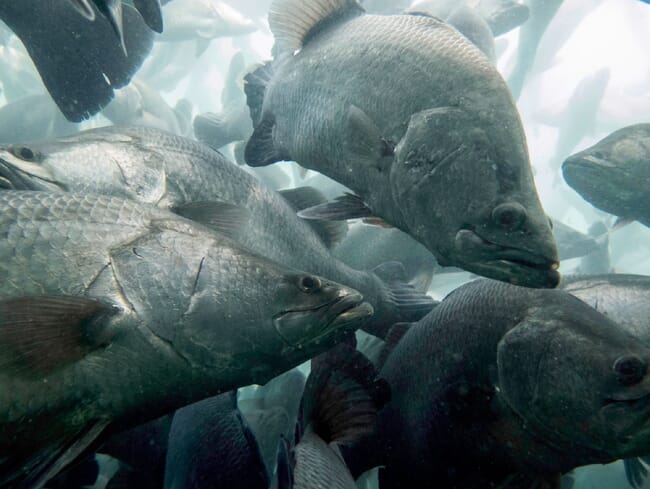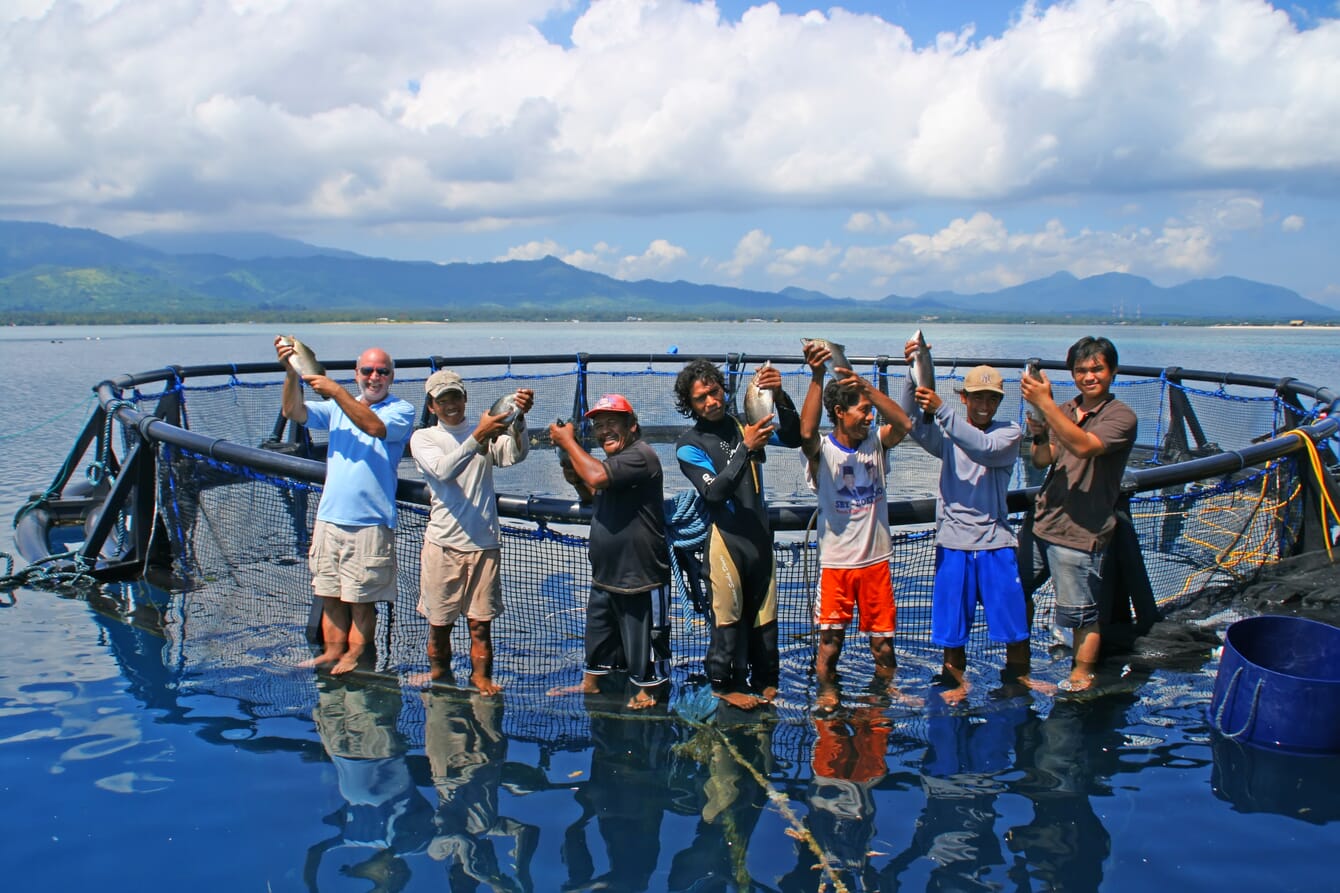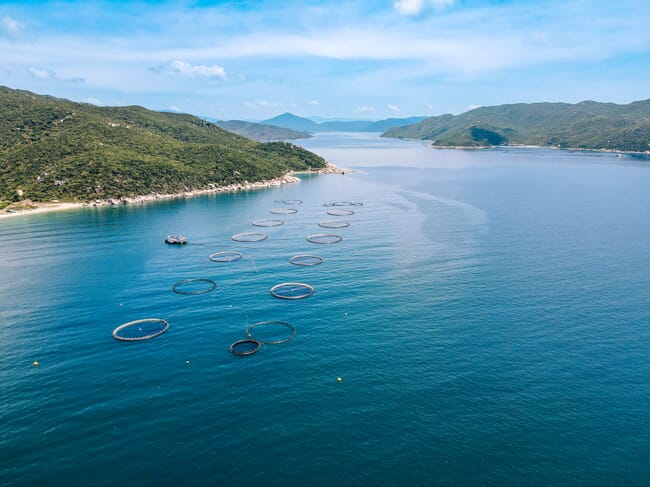
© Barramundi Asia
The FAO projects the global demand for edible marine finfish will be 200 million tonnes in 2050, an increase of 29 million tonnes from the 171 million tonnes produced in 2019. Wild capture fisheries are static. The supply increase will necessarily come from aquaculture. To put this in perspective, global farmed salmon production is about 2.5 million tonnes. Even an optimistic allowance for current marine finfish production businesses to expand enough to meet half the demand, means the aquaculture community needs to increase marine finfish production equal to 4 more salmon industries in the next 25 years. Considering the current salmon industry took 50 years to reach its current level, this increase will require a monumental undertaking.
Climate resilient marine finfish aquaculture production systems must be environmentally and economically sustainable, consider social equality and animal welfare, promote biodiversity, and be climate resilient. This is a formidable challenge and a tremendous opportunity.
We look at the climate resiliency requirement and consider barramundi.

© NewSeas
Climate change is impacting marine finfish aquaculture. Higher water temperatures can increase stress leading to lower growth and survival rates, and in extreme cases render existing sites unusable for a particular species (such as salmon). Unusual rainfall variation can increase or decrease salinity, also stressing fish. Rising sea levels, ocean acidification, and more frequent extreme weather events contribute to the alteration of marine ecosystems and food webs. All these climate change-induced stressors contribute to a higher risk of disease for marine finfish.
Barramundi, also known as Asian sea bass, is a highly adaptable and climate resilient species with well established culture technology.
Barramundi can tolerate sea water temperatures up to 35°C. Current seawater temperatures in their native region average 27°C to 31°C. Projected seawater temperature rise of 1 to 2°C is well within barramundi’s temperature range. In fact, barramundi grow faster at warmer temperatures.
Ocean salinity is impacted from climate induced rainfall alterations. Barramundi tolerate salinities from 0ppt to over 40ppt, making them one of the most adaptable aquacultured species.
In addition to its adaptability to different temperature and salinity levels, barramundi is relatively resistant to disease and parasites, as proven with its successful culture throughout its native region.
Barramundi is distributed in the Indo-West Pacific, spanning the waters of the Middle East, South Asia, Southeast Asia, East Asia, and Oceania. This wide range distribution offers economic opportunity to millions of coastal inhabitants that will be adversely affected by climate change.
Barramundi’s feed conversion ratio (FCR) is typically around 1.5 to 1.7, better than many farmed species and significantly lower than beef (6.0-10.0), pigs (2.7-5.0) and chicken (1.7-2.0). Lower feed conversion ratios equal more efficient production, fewer resources used and reduced climate impact. Barramundi also do well on a high vegetable composition feed.
Marine sea cage culture is moving farther from shore, and barramundi do well in “offshore” locations. Sea cage culture uses less energy than land based aquaculture – no pumps, only solar powered lights, and technology is rapidly moving towards solar powered boats, very efficient in barramundi’s sun-soaked native tropical range, reducing energy costs further.

© Australis Aquaculture
Overall, the combination of barramundi’s temperature and salinity tolerance, as well as its hardiness, make it an excellent choice for climate resilient aquaculture. Its versatility and ability to thrive in different environments, excellent market acceptance, and proven culture technology make it a sustainable and reliable option for farmers and consumers alike.
To go a step further let’s consider how to expand barramundi sea cage culture to help meet the tremendous future demand for marine finfish. A multi-faceted collaborative effort is required.
Fortunately, all the necessary players and pieces exist. Feed companies have already made strides in specific feed formulations for barramundi. Vaccines have been developed and are commonly used in the industry. Many companies have developed the sea cage and mooring technology required for more exposed sites. The hatchery technology is well established and two major broodstock-genetic improvement programmes – one by Mainstream Aquaculture and the other by a consortium including Allegro Aqua, Barramundi Group and Temasek – are underway.
AI, sensing technology and intelligent data are being applied to improve management and efficiency of fish culture and monitor impacts to ensure no harm is done to the environment. Carrying capacity models match production biomass to the local ecosystem, preventing the harmful effects of overproduction. The expertise and experience exist to design, build and manage sustainable sea cage farms. Sustainability certification agencies have already certified barramundi farms, and NGOs have realised that aquaculture can be accomplished sustainably, provide opportunity to coastal communities, and treat workers and animals fairly.
A collaborative effort of producers, aquaculture supply companies, experts and organisations can unite to attract investment and government support to expand sustainable, climate-resilient barramundi production to equal another salmon industry and help meet the global demand for marine finfish protein while providing opportunity to millions of coastal inhabitants in its native tropical region.




